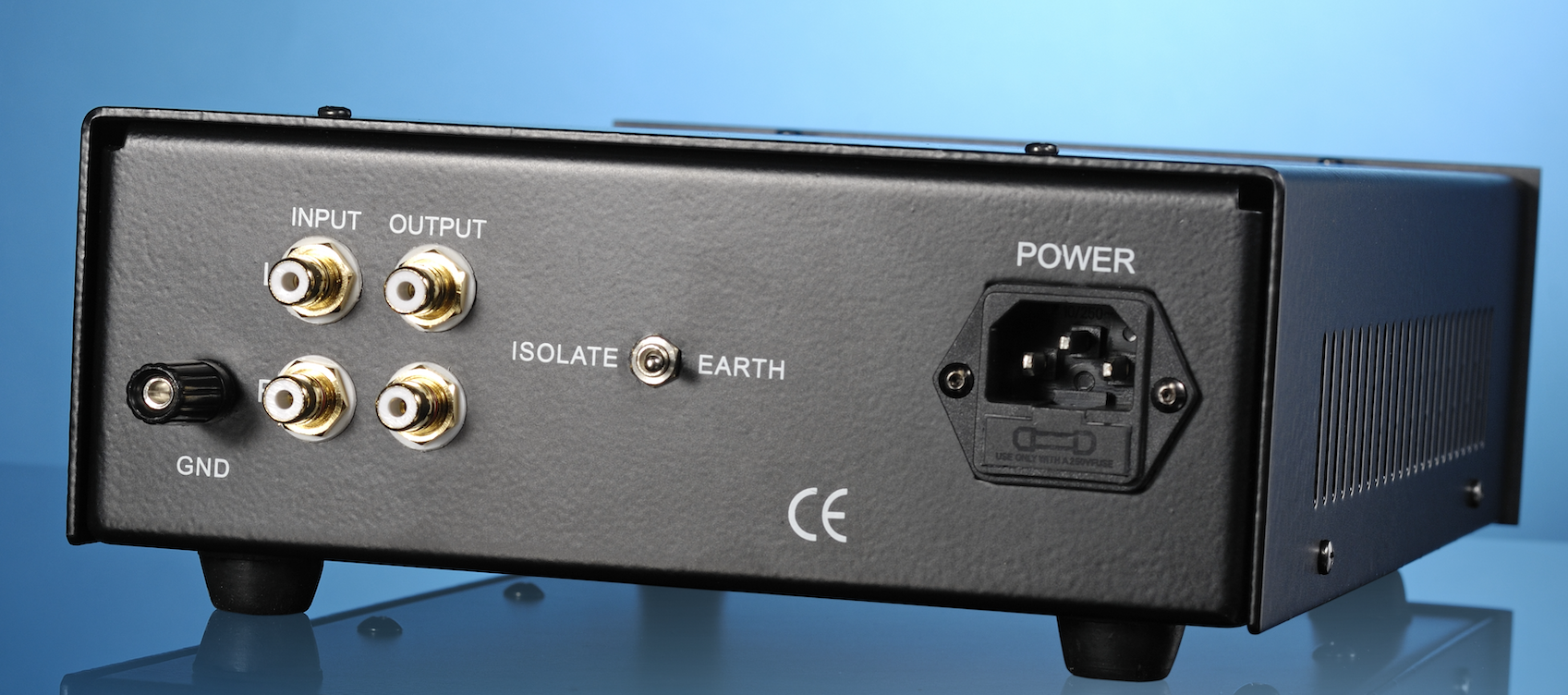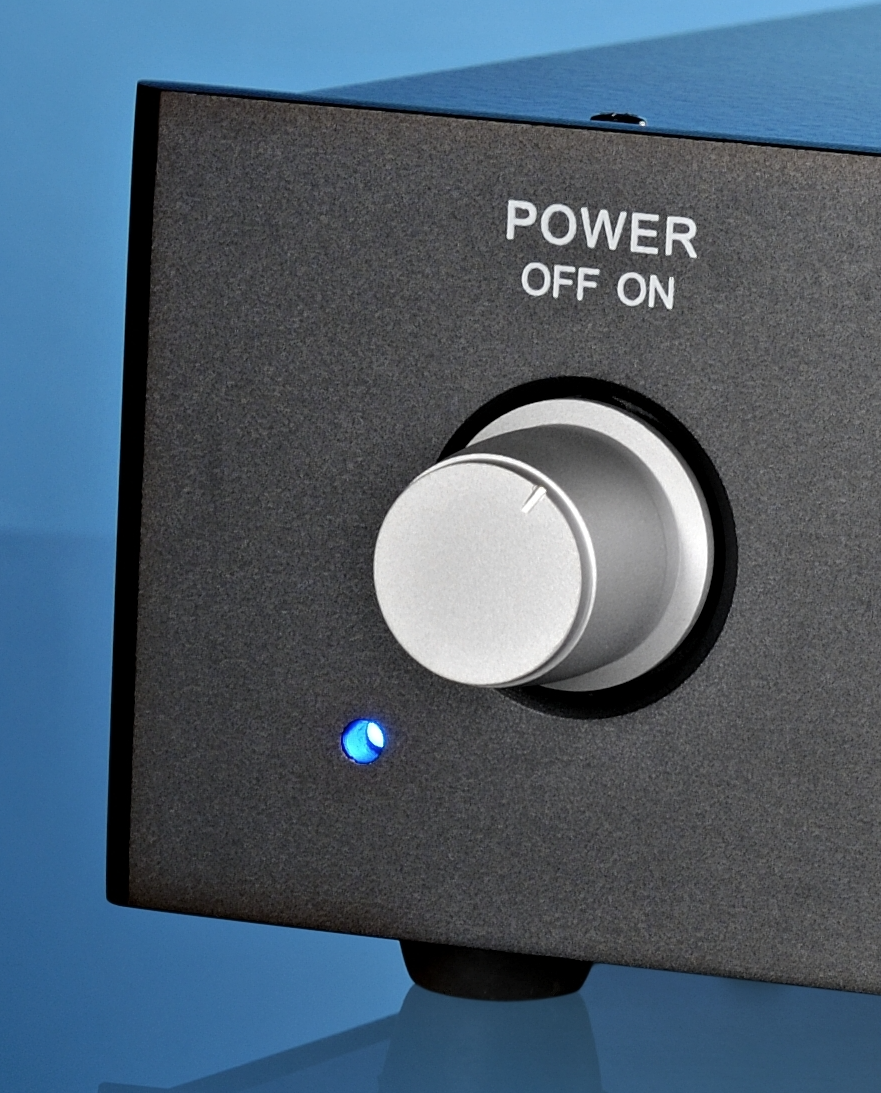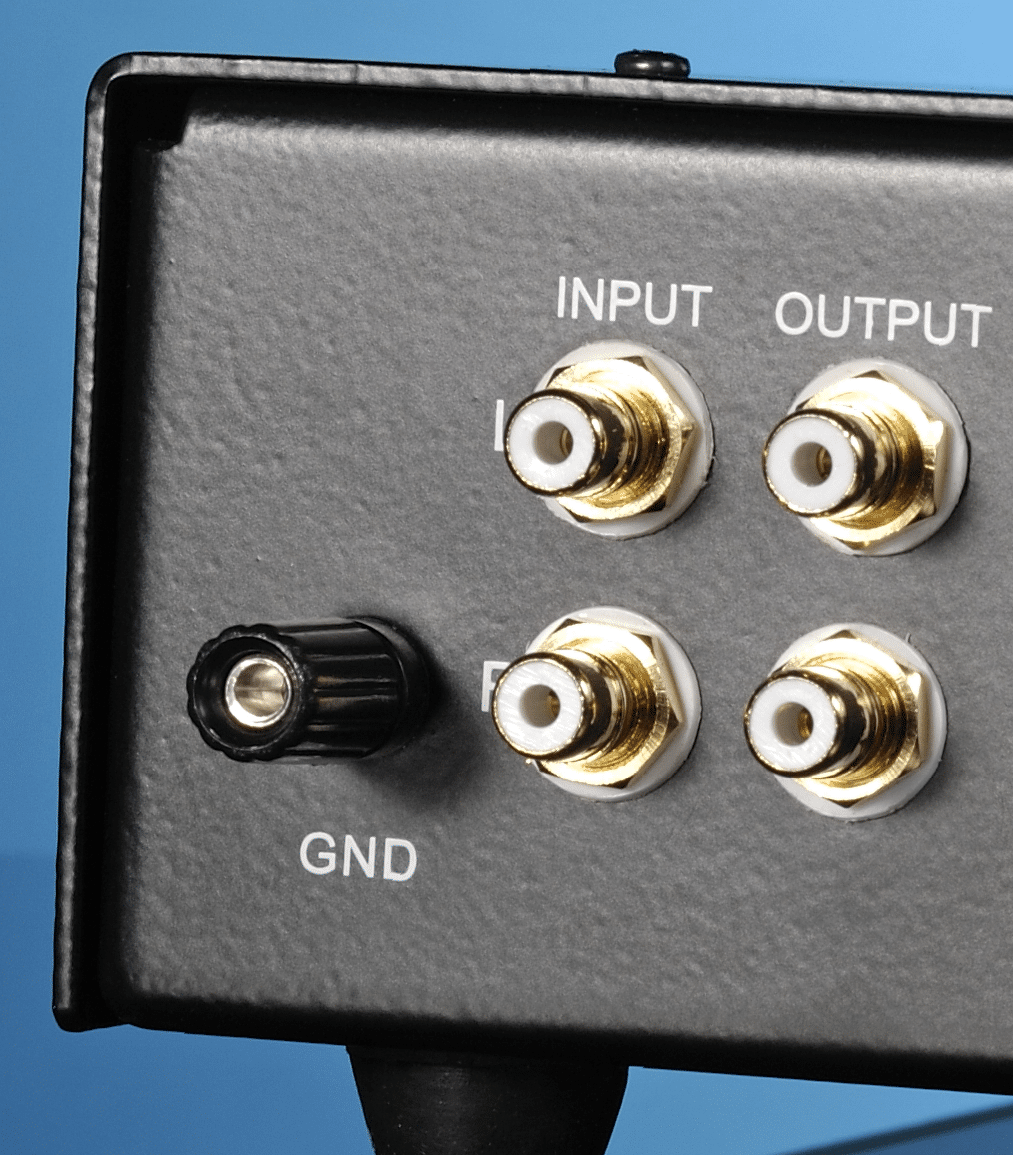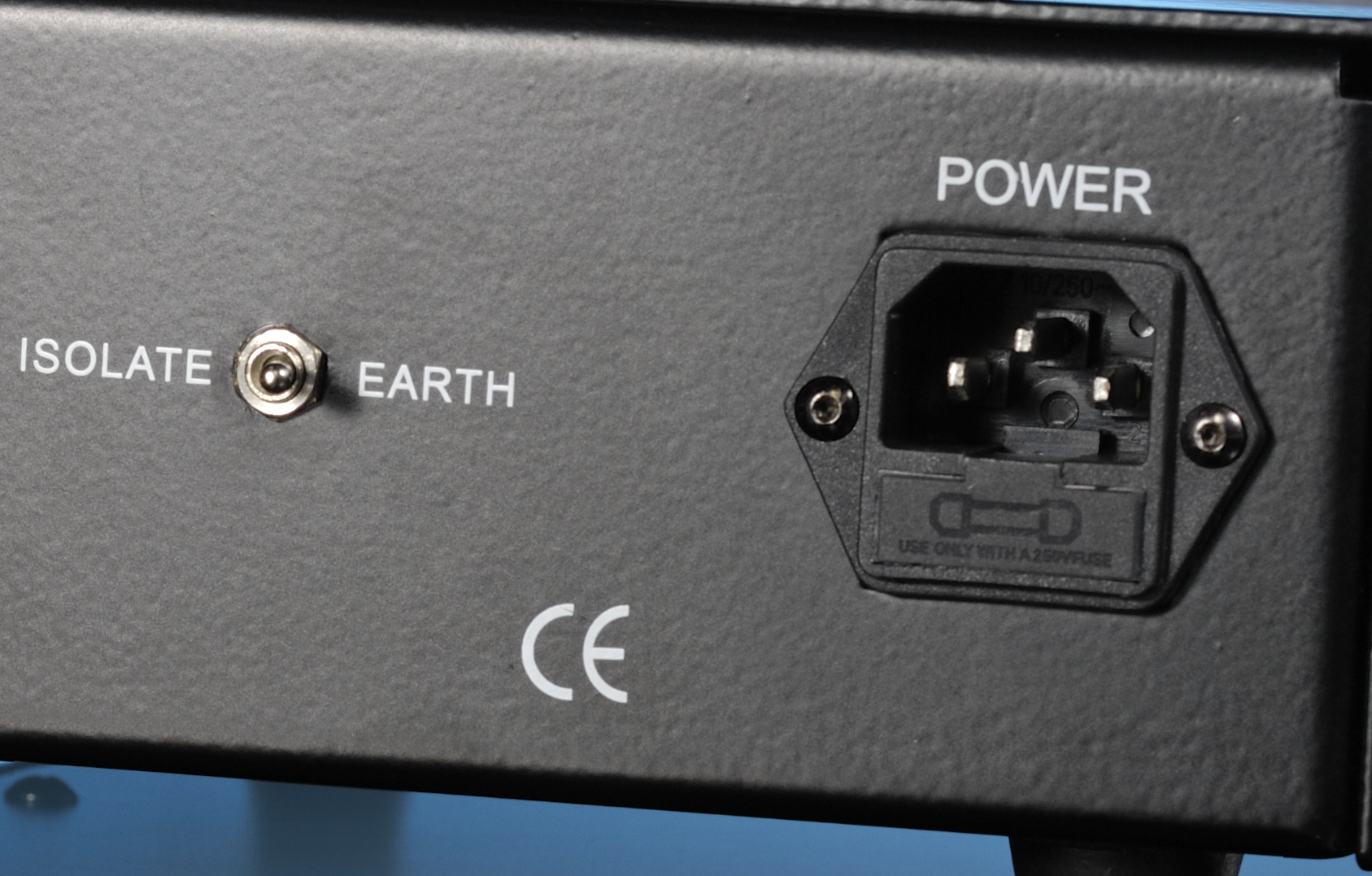The Article
P10 Phono Amplifier From Pure Sound
14th November 2018

Offering a moving magnet stage with moving coil upgrade options, Paul Rigby reviews the Puresound P10 phono amplifier
An essential part of the analogue chain but one that rarely receives enough attention when putting together a vinyl-sourced system, the phono amplifier is critical to obtaining a top quality sound from your vinyl records.
Given the specialist job of boosting the tiny signal emanating from your delicate stylus, there are two specific flavours commonly found on most phono amplifiers. Both ally themselves to cartridge technologies: moving magnet and moving coil.
The P10 phono amplifier is valve based and is devoted to moving magnet but you can upgrade specs to moving coil using a step-up transformer. Puresound offers one of its own, the T10 at £369.95.
Spanning 215 x 360 x90mm and weighing in at 5kg, in its default configuration, the P10 can handle classic moving magnet cartridges (at 47K Ohm) but also high output moving coil cartridges and moving iron technologies (I used a moving iron Origin Live Aladdin during the test).
Talking to designer, Guy Sergeant, he explained that the design of the P10 uses, “…double triodes in a simple anode follower configuration. The phono equalisation is achieved using passive components and can therefore maintain its accuracy over time without introducing the unacceptable levels of phase shift found in active equalisation stages. There is no negative feedback in the circuit. The P10 features a particularly elaborate HT power supply. After the initial rectification and smoothing, the supply is split and two separate, heavily decoupled high voltage rails are established. These feed each half of the output valve while further decoupling of each rail allows the cleanest and most independent voltage rails possible to feed each half of the input valve.”
The valve filaments are also fed by a DC supply while the circuit makes use of close tolerance metal film resistors, polypropylene signal coupling capacitors and selected valves.
Aesthetics are nothing to write home about, this is a well made, yet simple boxed chassis with a simple power switch on the front and basic phono amplifier connections on the rear. That’s fine with me, though, I would rather that the art emerged from within.
SOUND QUALITY
I began the tests with an original pressing of Joe Jackson’s high energy jazz LP, Jumpin’ Jive and the track, Jumpin’ with Symphony Sid.
I was a little puzzled by the P10 for a minute or two. I realise that this amp cannot be described as low cost and, yes, there’s a reasonably pricey moving iron hanging off the tonearm so we’re not talking cheap and cheerful. I realise all of that. Even so, I wasn’t prepared for the quality of the sound from the P10.
Before we get to the the P10 itself I’d like to talk about the Aladdin first off. Why? Because there are phono amplifiers out there that fail to allow the Aladdin to ‘do its stuff’. The Aladdin has a smooth, low noise midrange that encourages you to up the gain. Its low noise design then sucks in more detail from that point onwards. Restrictive phono amplifiers can make the Aladdin sound a little clunky, claustrophobic and stumbling in its approach. Not the P10. The Pure Sound amp basically said to the Aladdin, “OK, you want air and space to operate within? Here, have this lot…hell, have some more.” It was the platform created by P10 that impressed me more than anything. That is, for the price, the P10 was pretty darned invisible, refusing to impose itself on the soundstage and giving the Aladdin a large ballroom to dance within.
What I’m trying to say here is that the P10 didn’t sound great, it allowed the Aladdin to sound great. My mind figuratively pointed at the cartridge, not the phono amplifier. I can’t think of a bigger compliment to give to the P10 than that. It just, well, got out of the way.
Specifics? That space and air that I mentioned was generated in an around the mids and treble, giving the music a dynamism that allowed it to be both relaxed and far reaching in its approach. Here was a real ease and flow about the midrange. Strain and tension were not to be heard here and, because of that, the musicians sounded like they were having a ball. The lack of any constriction and the tonal accuracy produced off the back of that plastered a smile all over my face.
One specific highlight was the combined brass attack from this song and the ability of the P10 to add enough insight into the soundstage to allow the ear to hear the whole and yet differentiate between instruments. At no time, did this collection of horns sound like an amorphous blob. Detail oozed from the midrange.
Bass was not excessive yet remained characterful and there was plenty available for the job in hand. Although bass never felt massy, that bass never lacked character at any time, in fact it was nicely balanced around the soundstage and honed to boot.
I then turned to an original pressing of The Rutles self-titled album and their Beatles parody of Lucy in the Sky With Diamonds, Good Times Roll. Bass performed excellently here, adding weight to the spacious percussive strikes.
The Lennon-like vocals were expressive and offered a heap of emotive textures while the rather shy bass guitar could be easily tracked by the ear, such as the admirable instrumental separation.
The next track, the Penny Lane-Like, Doubleback Alley allowed the piano to be expressive yet simultaneously controlled, opening up the instrument and allowing the ear to enjoy the complexity of this instrument, free of any damaging smearing.
Vocal harmonies were to be enjoyed as a single entity but the ability of the P10 to infuse air into all aspects of the arrangement meant that the ear could differentiate and recognise each voice as a separate person.
CONCLUSION
You might question spending almost £700 on a moving magnet phono amplifier but, with the right step-up transformer upgrade, the two box system can bring its own low noise benefits and there is a lot to be said for getting the basic moving magnet portion of any phono amp ‘just right’.
And ‘just right’ is what you can hear here because the P10 is quite a performer. Feed it with a high quality moving magnet cartridge and it will blow away much (Most? All?) of the competition.
PURE SOUND P10 PHONO AMPLIFIER
Price: £689.95
Tel: 01822 612449
Website: www.puresound.info
GOOD: spacious mids, balanced output, easy to set-up and use, clarity, transparency
BAD: nothing
RATING: 8
[Don’t forget to check out my Facebook Group, The Audiophile Man: Hi-Fi & Music here: www.facebook.com/groups/theaudiophileman for exclusive postings, exclusive editorial and more!]
REFERENCE
Avid Acutus turntable
SME IV tonearm
Origin Live Aladdin moving iron cartridge
Icon PS3 phono amplifier
Aesthetix Calypso pre-amp
Icon Audio MB845 Mk.II monoblock amplifiers
Quad ESL-57 speakers with One Thing upgrade
Tellurium Q Silver Diamond cables
Blue Horizon Professional Rack System
Harmonic Resolution Systems Noise Reduction Components
All vinyl was cleaned using an Audio Desk’s Ultrasonic Pro Vinyl Cleaner








Thanks for this review, the Puresound looks like something to try to hear. Auditioning not so easy at the moment so either wait or take a chance. Wonder if you could offer some thoughts? Currently have a Rothwell Rialto through a Roksan Kandy K2 to play an Ortofon 2m Black on a Project Classic. Think the Rothwell improves on the built in phono stage and like a lot. But curious about the Puresound (must be the valves) and whether it would work into the Roksan and improve and grateful for thoughts.
Hi Derek – I would recommend contacting Pure Sound and asking about a home demo. It’s always worth asking.
Did you try a T10 or have you ever heard one in use?
I haven’t had the pleasure, John. At least, not yet.
Hi Paul, Thankyou for your reply. Have you checked out the PDF featured at Kurtblum.com on the PureSound T10 MC Transformer SUT?